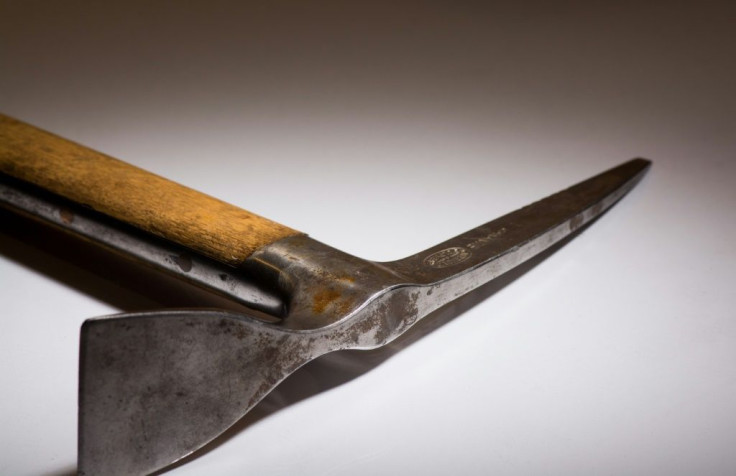The Axe That Killed Leon Trotsky Now A Museum Exhibit
The ice axe that was plunged into Russian revolutionary Leon Trotsky's skull during his gruesome murder in Mexico on August 20, 1940 is today among the prized exhibits at Washington's International Spy Museum.
It took Keith Melton, an espionage historian for the CIA, nearly four decades to find it -- as well as to figure out why the assassin sent by Joseph Stalin, Ramon Mercader, used the axe to kill Trotsky.
Melton, who combed the world to amass the collection of ingenious and macabre tools of the black arts of spying that fill the museum, had his eye on finding the weapon since the 1970s.
It had disappeared shortly after the assassination. Following clues from Mexico to Moscow and countries in between, Melton repeatedly came up empty-handed.
"I like detective hunts. This really is one that challenged me," he said.

As he searched, he also focused on a mystery: why choose an ice axe?
An experienced mountaineer, Mercader was handy with the tool, also known as a piolet.
But just shooting the 61-year-old revolutionary would have been easier, after several failed attempts crafted by the Russian NKVD, or secret police.
Trotsky never left his small compound in the Mexican capital where he went into exile, protected by a handful of armed guards.
But Mercader gained entry to the revolutionary's small entourage as the lover of a New York Trotskyite, who believed he was a left-leaning son of a wealthy Belgian diplomat -- a cover designed by the NKVD.
After moving to Mexico City, over time Mercader could enter and leave the compound without being searched.
Shooting Trotsky was one option, but it risked noise that could make escaping difficult.

Then, weeks before the planned act, Melton says, Trotsky installed a new metal gate at the entry controlled by an electric switch in the guard booth.
That meant Mercader would have to kill Trotsky quietly and instantaneously with the ice axe's jagged pick, so that he could walk out, the guards unsuspecting.
"I had a rare ability to handle the piolet, since two blows were sufficient for me to crack through an enormous block of ice," Mercader told police afterward.
Where to get one in Mexico, though? As it turns out, the son of the owner of Mercader's residence had one, and so he stole it.
Mercader cut the long handle down by half, and entered the compound on the day of the attack hiding it -- along with a backup pistol and knife -- under a raincoat.
It did not go as planned: the axe went 2.75 inches (70 millimeters) deep into Trotsky's skull but did not immediately kill him. The victim shouted and struggled, the guards were alerted, and Mercader was captured.
Trotsky died in hospital the next day. And, after being displayed at a police press conference, the grisly weapon disappeared.
Over the years, Melton saw numerous axes purported to be the original, including one on display in a Prague museum. But none were the right brand or model, from the Austrian maker Werkgen Fulpmes.
Finally, in 2005, the daughter of a former Mexican police officer, Ana Alicia Salas, revealed she had kept the axe under her bed for years.
It matched perfectly, and Melton eventually bought it for his collection -- for how much, he won't say.
One more piece was crucial to the puzzle: the police evidence pictures from 1940 showed a bloody fingerprint on the weapon.
Working with a top FBI forensic scientist, Melton said, "We were able to determine there are the remnants of the bloody fingerprint still on the axe."
"The contour of the pattern matches perfectly with the fingerprint shown in the photo."
© Copyright AFP 2024. All rights reserved.





















